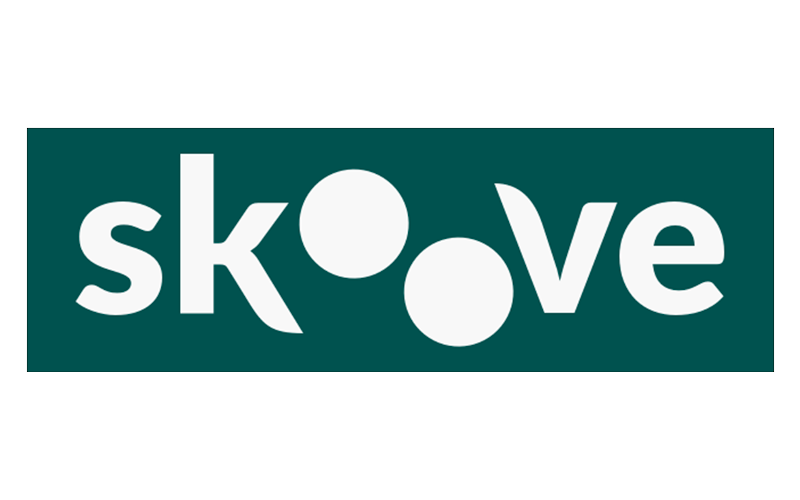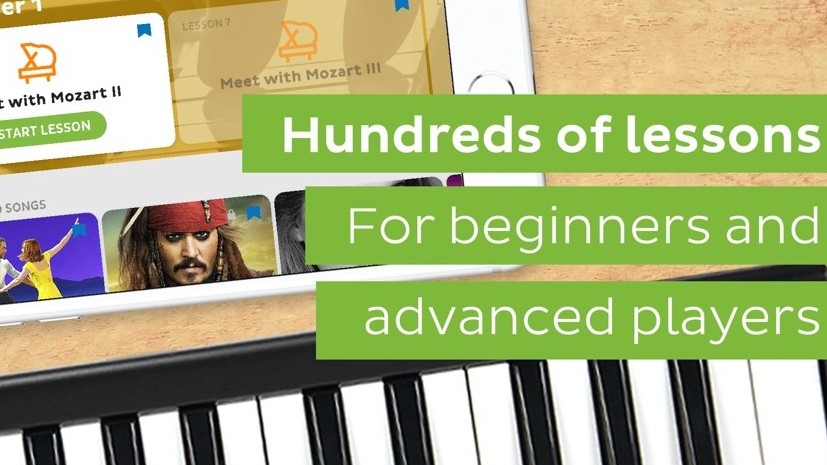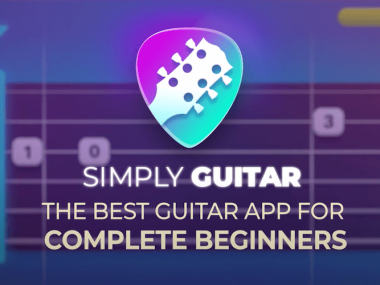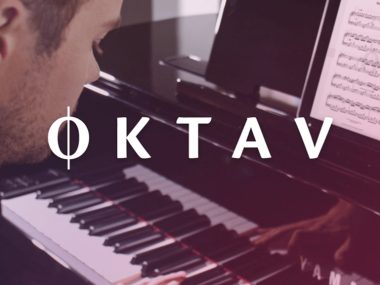In these trying times, it isn’t always easy or affordable to have regular piano lessons. COVID-19 and tightening wallets have made us all seek online alternatives to face-to-face sessions. You can of course turn to the internet as an alternative, playing along with YouTube videos of your favorite songs.
However, constantly flicking from keyboard to computer to rewind the track, along with lack of any objective feedback, can make this a frustrating exercise. It can be difficult to structure your learning and the rewards can be piecemeal.
Furthermore, nowadays more and more adults are returning to the instruments they failed to learn to play when they were kids. If you are a later-life learner, the idea of going through your piano grades with a tutor more used to teaching little kids is unthinkable.
You want to be self-taught, and are seeking ways to reawaken your musicality without embarrassment. For adult learners, distance-learning methods are ideal, and an app that works in sync with your keyboard could provide a suitable substitute to the feedback of a physical teacher.
If you are intending to learn remotely, a structured, well-designed online or smartphone app may be ideal. Fortunately, there are many on the market, particularly for keyboard players. Whether you’re a wannabe Elton John, Herbie Hancock or Beatrice Rana, there are no shortage of available apps. Today, let’s take a look at Skoove!
👉 Check the Plans of Skoove
What is Skoove?
Skoove is one of the newer kids on the block, having launched in 2015. It is an interactive, online platform for keyboard tutorials It has fast become a market leader, boasting more than one million users, across its two tiers and three subscription plans. Skoove has been reviewed in publications including Forbes, Wired and The Guardian.
Reviewers have said that “Skoove overall provides a good foundational knowledge of piano that will be valuable as you move on to more advanced music and courses.”1 and “each lesson incorporates fundamental music concepts and skills. You won’t just be playing the notes but you’ll also understand how to interpret music and apply your skills to other music you’d like to learn.”
So far, so impressive. Let’s have a closer look at how it works and what it offers.
Skoove works by listening to what you play and showing sheet music alongside a virtual keyboard with the appropriate notes highlighted in sync with your playing. It’s a simple and clean visual presentation that helps you match your fingering to the printed music, without you having to look down at your actual hands.
No more slaps across the back of the knuckles with a stout ruler either! You can simply see when you’re getting it right, and its up to you to reach an appropriate level of satisfaction before you move on.
Will it be compatible with my kit?
Skoove works with most keyboards, so long as they have a MIDI or USB-out capability. You can use an acoustic piano too, so long as the device you’re running Skoove on has a working microphone and can pick up your performance. MIDI input works best, allowing you to connect any keyboard directly.
Connecting a keyboard directly allows more precise feedback on how you’re performing. You can use headphones too, for added privacy and focus. Skoove is compatible with PC and Mac – to access it this way, simply visit the Skoove website and set up a login.
You can do so via your Facebook account or by giving the system your name and email address – no other details need be shared (other than those required for payment). It is also available as an iOS app for iPhone or iPad, and as a Google Play app for Android devices.
Can I try before I buy?
The good news is that you can have a free basic demo, consisting of 25 lessons. This does not require you to give credit card details. You can also try the full system for seven days before you commit to a purchase.
If you pick the latter option, you will have to enter credit or debit card information and the service will immediately move to a $79.99 annual subscription if you don’t cancel within the trial period. This works out at $6.99 a month, which is extremely reasonable and compares well with its closest rivals (Yousician and Flowkey are £9.99, Piano Marvel is $15.99 and Pianote works out at approximately $16.42 per month).
There are also monthly or three-monthly payment plans, and these are priced at $19.99 and $13.99 per month respectively. Clearly, it pays to go for the full year if you can.
How easy is it to set up?
When you first log in and select a course, you’ll be asked if you want to play an external keyboard or use an onscreen version. The onscreen option is really just there to allow you to try out the system, or show it to someone else, without plugging in a keyboard.
To learn anything of value, you really need the weighted and responsive keys of a proper instrument, although it need not be a full 88-key model. When you select “keyboard” you are given a choice between an acoustic or electronic keyboard. If you choose acoustic it will then ask to access your microphone, so that it can take sound in.
The USB/MIDI keyboard options are presented with easy-to-follow instructions and links to technical FAQs if you are having difficulties. You can also connect keyboards via Bluetooth. Whichever keyboard and connection method you use, you should be up and running within minutes.
What do I get for my money?
There are a huge range of courses available (21 in the free version), each of which is broken down into bite-sized modules based around a particular song, technique or style. For example, in the basic version, you can learn Chords and Scales, Blues and Boogie-Woogie, the music from Bohemian Rhapsody or even Keyboard for Producers.
The makers of Skoove have very much gone for a “more is more” approach in terms of variety. The songs contained within the lessons range from jazz standards and classical pieces to more contemporary tracks from Adele, Daniel Powter and others. The teaching methods are logical and straightforward and you’ll be playing simple tunes from day one.
How do the Lessons Work?
The Piano Songs Beginner course is an alphabetic selection of tracks ranging from soul classic “Ain’t No Sunshine” to The Scorpions’ “Winds of Change”. Click on one of them and you are presented with a screen divided vertically into sheet music and keyboard view.
The system will then take you through several steps – learning the keys and timing for each hand and then combining them. It will let you practice as much as you like before moving on.
The system listens to what you play and depicts it on the keyboard, alongside what you should be playing. You can repeat each section of score as many times as you like until you get it right.
More basic lessons, such as Piano Beginner 1 use the same interface and graphics but with additional onscreen pop-ups and arrows to guide your fingers to the right keys. You can choose to follow the courses in any order you like, alternating between technique-based courses and song-focused ones. You are very much left to structure your own learning, although you can also just follow the default order for maximum gain.
How does Skoove compare to its competitors?
The Pros
- Clear and simple visual interface
- Highly compatible with keyboards and OS
- Large range of lessons and music tracks
- Affordability, across a range of plans
- Suits a self-starter with discipline
The Cons
- Skimps a little on music terminology and details
- Sheet music displayed only segment by segment – doesn’t allow score printing
- Doesn’t stress scales and chord practice
- No carrots or sticks and no social media integration
- Not suitable for under-12’s without supervision
Alternatives like Simply Piano do not let you move on to the next lesson until you master the one you’re on. Skoove is more laid-back and progress-orientated in its approach. It does not treat learning an instrument as a sort of game.
Yousician and similar apps work more like Guitar Hero, where color-coded notes on a keyboard match notes highlighted on a stave as the track plays out. To succeed, you try to match the timing. Those of us less game-orientated might prefer to play along at our own chosen tempo, and Skoove offers that flexibility.
There are no videos of pianists to play along with. Whereas systems like Pianote use instruction videos, Skoove is very much an app, rather than a masterclass. If you need the boost of a charismatic teacher, Skoove might not be for you.
However, if you are a self-motivated learner, Skoove is extremely user-friendly.
Skoove is not particularly integrated into social media – there’s no “sharing” your latest achievement or performance. It doesn’t dangle the carrots of virtual rewards or medals like some fitness apps such as Strava do. It assumes that you are sufficiently motivated to persevere with the reward of continual improvement, and without the thumbs up or likes of strangers.
Skoove is not a stern taskmaster – it doesn’t insist that you learn endless scales and won’t force-feed you complex musical terminology.
Some students might feel this lack of attention to detail a problem – classical pianists, for instance, might find this system too rudimentary in terms of musical jargon and technique. For would-be maestros, there’s the FlowKey app, which focuses more significantly on sheet music and mastering specific sections of a score.
What sort of music will I be playing?
One of the most frustrating aspects of learning a new instrument and following an instruction book, for instance, is having to learn music you hate. Nobody really wants to master The Birdie Song or Freres Jacques endlessly. No doubt many future rock legends have fallen at this hurdle.
Well-curated tracks and artists, such as those featured in Skoove, mean that beginners can always find something they’re excited to play.
What sort of musicians and composers might you encounter at the start of your Skoove sessions?
Here are some examples:
- Classical: Mozart, Bach, Grieg, Liszt, Tchaikovsky, Bernstein
- Jazz and Standards: Somewhere Over the Rainbow, Fly Me to the Moon, Moon River
- Pop and Rock: Coldplay, Michael Jackson, Bob Marley, Ed Sheeran, Queen, Soft Cell
- Film and Television Soundtracks: Amelie, Forrest Gump, Game of Thrones, James Bond
- Folk and Traditional: Silent Night, Amazing Grace, My Bonnie Lies over the Ocean
Skoove delivers a mix of styles and genres to suit most tastes, and with over 400 tracks in its repertoire at time of writing, you’re sure to find something you’ll want to learn.
Skoove review – in summary
What Skoove offers is a simple, and highly affordable all-round system for users with wide-ranging musical taste who want maximal ease and flexibility. It rewards commitment with continual and self-evident progress.
It doesn’t baffle with complexity and won’t frighten you by insisting you study Rachmaninoff’s Piano Sonata #2 before you’re ready. Think of it as a benevolent aunt, rather than the bandleader in the film Whiplash!
As one commercial music producer puts it: “Skoove is a good introduction to playing the piano if you want to learn it on your own, and especially if you’re attuned to that style of learning. If you’ve got discipline, you can breeze through a few lessons daily over the course of a month or two and, coupled with practising on your own, you’d have a strong foundation for piano playing that you can build on as you venture into production.”
If you want to play Liszt at Carnegie Hall, you will have to enroll in a top music school or train face-to-face with a master. For the rest of us, with ambitions simply to entertain our friends, play in a local band or express our latent musicality, Skoove is one of the best and most affordable apps on the market.
In short, you probably won’t become a concert pianist using Skoove, but you might just master that Bruno Mars track or Bach chorale.
Why not give it a go? Click here for a free seven-day trial.
👉 Check the Plans of Skoove













